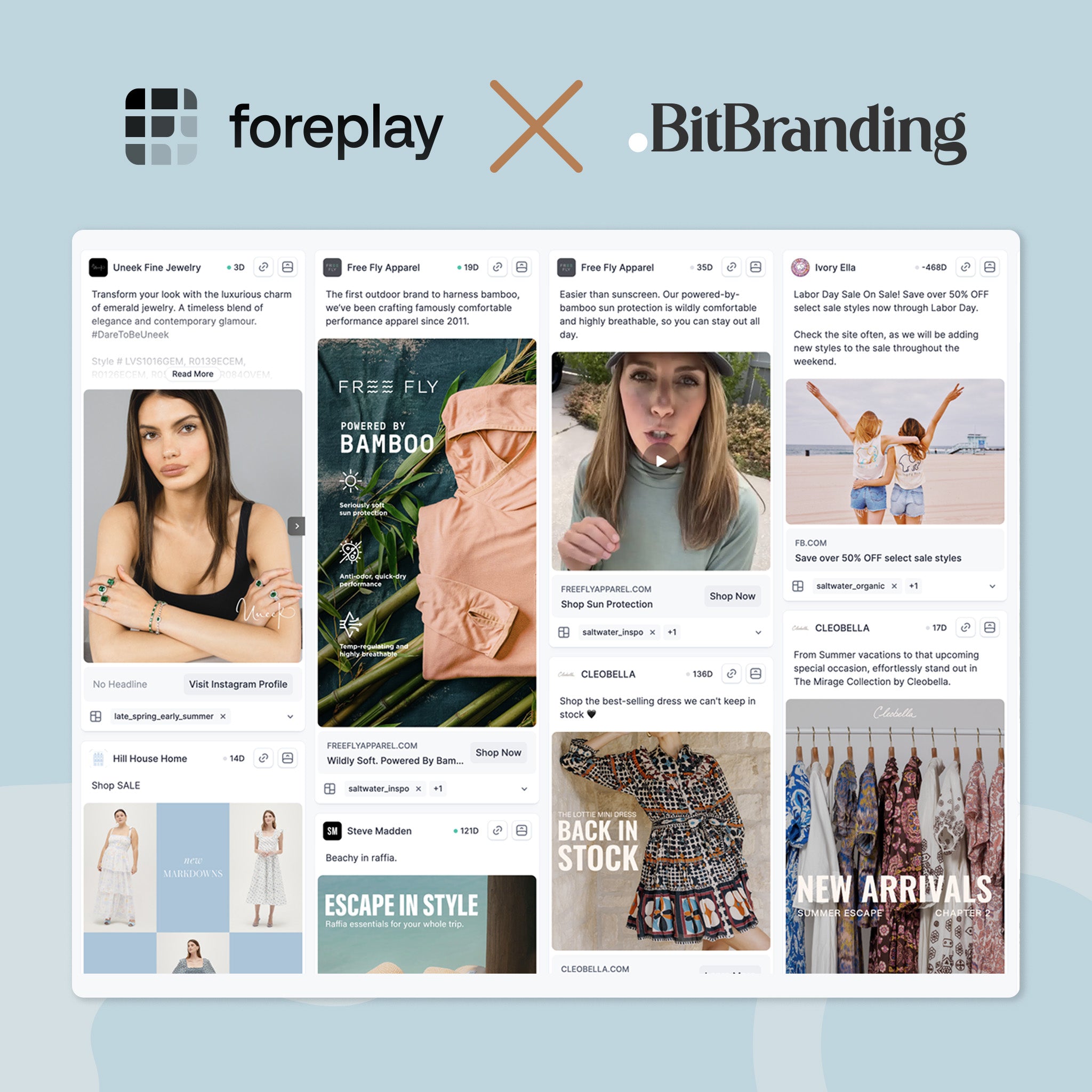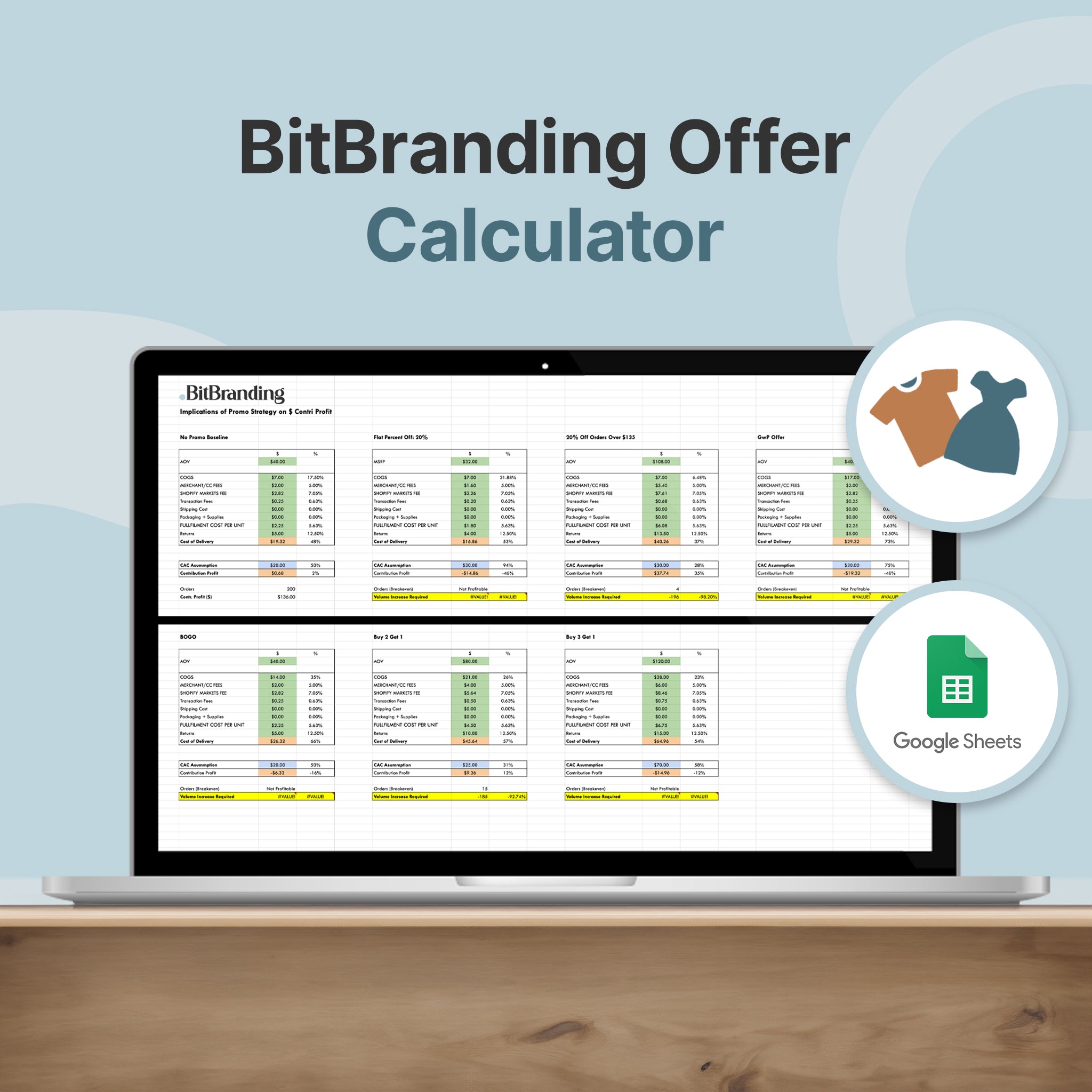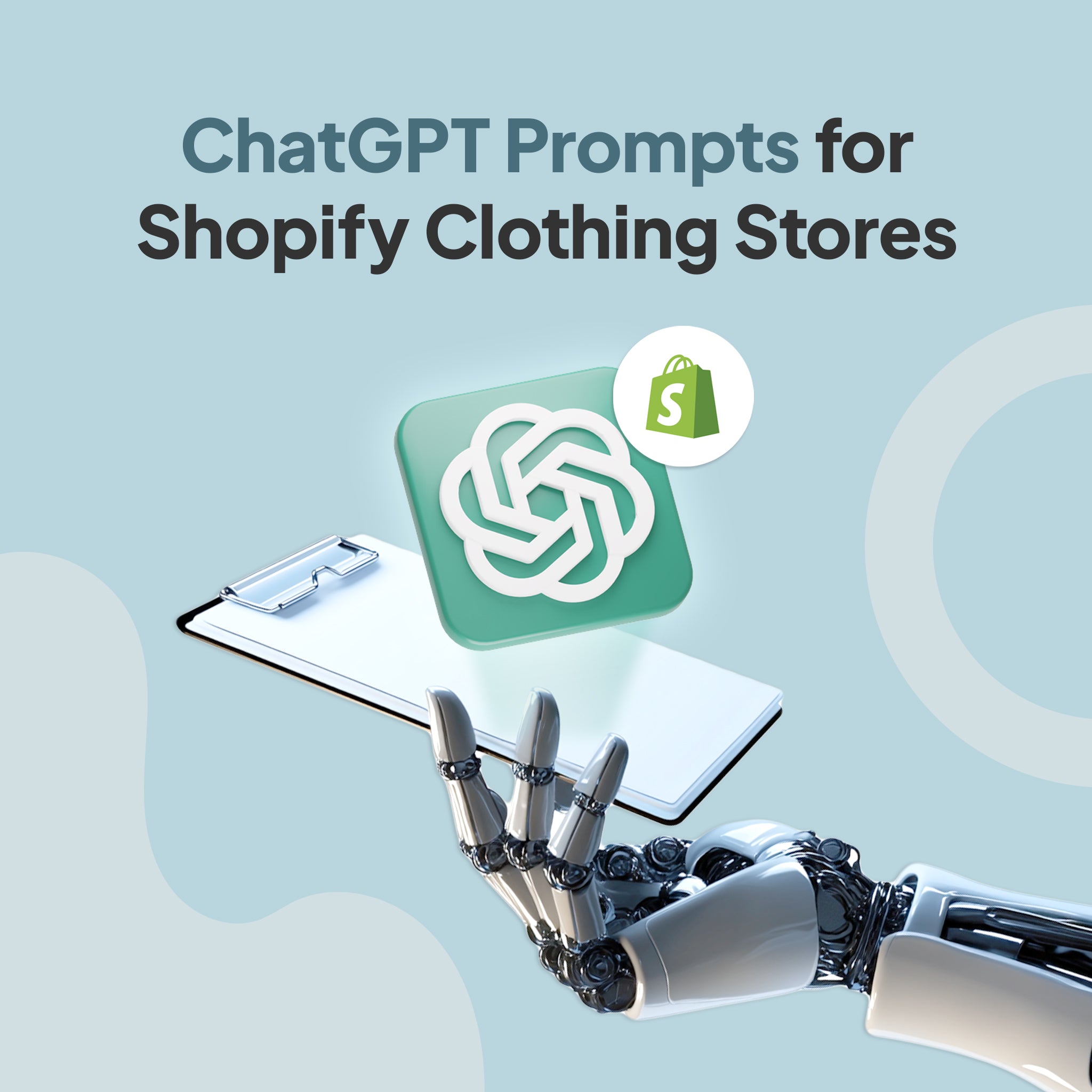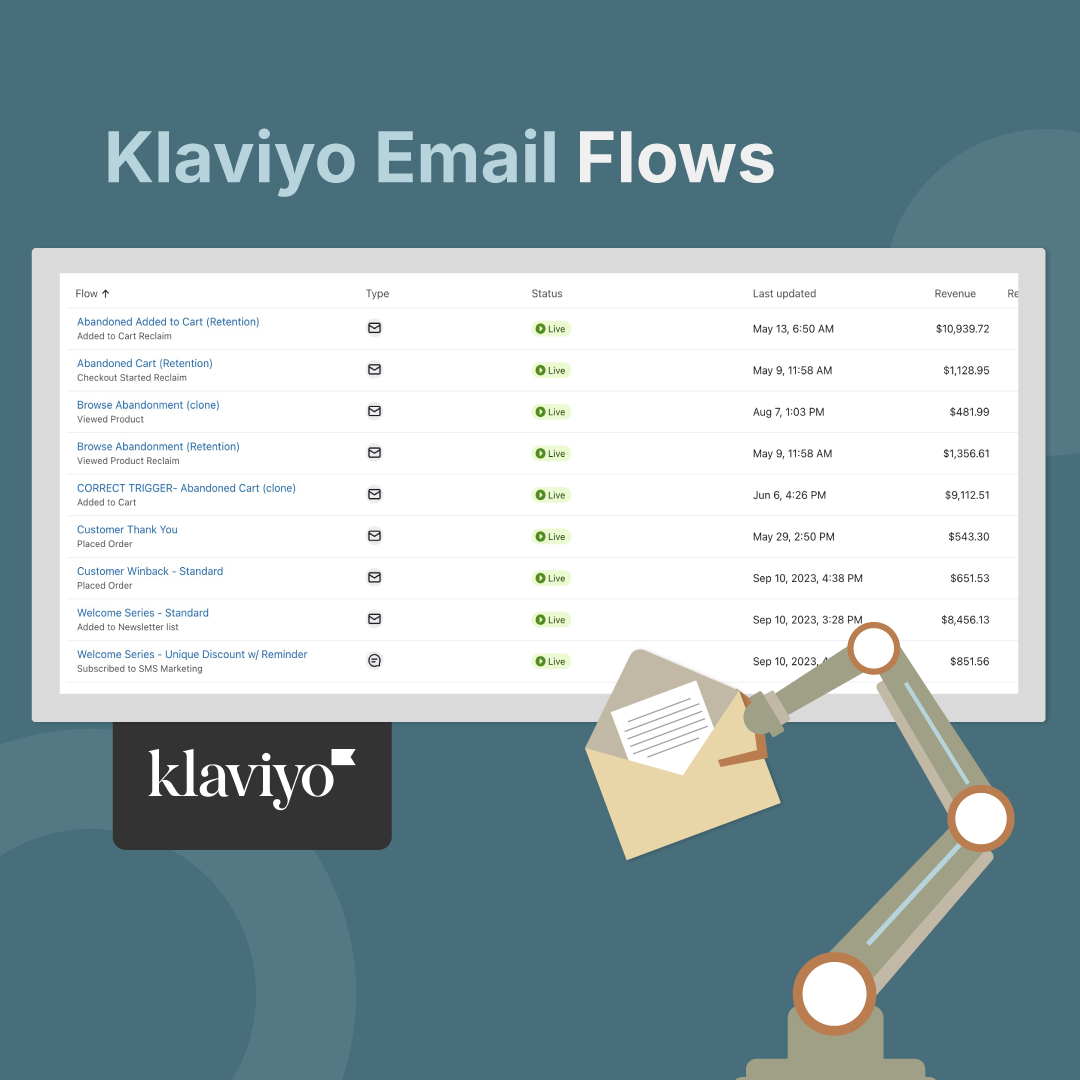In the fast-paced world of fashion, creating a successful clothing brand requires more than just a great product; it demands a well-thought-out marketing plan. Given that there are thousands of clothing brands and stores in the United States, it is essential that you stand out from the competition.
In this blog post, your expert team at BitBranding will delve into the key steps to craft a clothing brand marketing plan that not only works but also sets your brand apart in the crowded market.
Whether you're launching a new clothing brand or looking to revamp your existing one, these strategies will guide you toward success. Ready? Let's get started with this guide to marketing strategies for clothing brands.
Define Your Brand Identity
Your brand identity is like the North Star guiding your clothing brand's journey through the vast fashion galaxy. It's the essence of who you are, what you stand for, and what you promise to your customers.
As such, it's the first thing that you should consider. Here at BitBranding, the experts in clothing brand marketing, we emphasize that getting this right is your first step towards building a clothing brand that truly resonates with your audience. Let's take a closer look.
Crafting a Clear Mission Statement
Start by crafting a simple yet profound mission statement. This statement should express the core purpose of your brand.
For instance, if your clothing brand is all about sustainable fashion, your mission statement might be something like, "Empowering individuals to look stylish while saving the planet through sustainable fashion choices."
Your statement should be concise and memorable. Ideally, it should capture the heart of your brand's mission in a sentence or two.
Defining Your Unique Selling Proposition
Your Unique Selling Proposition is the special sauce that sets you apart from competitors. It's what makes your clothing brand stand out in the crowd. To define your USP, think about what makes your products or brand unique.
It could be your commitment to using eco-friendly materials, your exceptional craftsmanship, or your dedication to inclusive sizing. Make sure to express this clearly in your brand identity.
Creating a Memorable Logo
Your logo is often the first thing people associate with your brand. Keep it simple and easily recognizable. We suggest that it should reflect your brand's values and mission.
Let's continue our example of sustainable fashion for a moment. Here, it might be a good idea to incorporate an element like a leaf or a globe into your logo design to convey your commitment to the environment.
Crafting a Brand Voice
Your brand's voice is how you communicate with your audience. Whether it's on your website, in social media posts, or in product descriptions, your brand voice should be consistent and aligned with your brand identity.
If your brand is fun and youthful, your voice should reflect that. If it's more serious and eco-conscious, your tone should mirror that commitment.
Building Brand Guidelines
We recommend creating brand guidelines to ensure consistency across all your branding efforts. These guidelines should include rules for using your logo, color codes, fonts, and even guidelines on how to write content that reflects your brand's voice and values.
Simple and clear guidelines make it easy for anyone working with your brand to maintain consistency.
Know Your Target Audience
Next up, we need to talk about your target audience. Understanding your target audience is like speaking their language in the world of clothing brand marketing. Let's dive into this essential subject.
Define Demographics
Start by defining who your potential customers are in simple terms. Demographics include straightforward details like age, gender, location, and income.
For instance, your target audience could be "women aged 25-35, living in urban areas, with a moderate income." This straightforward snapshot helps you narrow down your marketing efforts effectively.
Explore Psychographics
It's beneficial to dig deeper into your audience's interests, values, and behaviors. This adds depth to your understanding.
For example, your target audience might be "environmentally conscious individuals who value sustainable fashion, love outdoor activities, and follow eco-friendly lifestyle trends." We recommend keeping this information simple and concise, focusing on the key aspects that align with your brand.
Create Buyer Personas
To make it even simpler, consider creating a few buyer personas. These are fictional characters that represent different segments of your audience.
For instance, you could have "Eco-Friendly Emma," who cares deeply about sustainability, or "Trendy Tom," who's always looking for the latest fashion trends. These personas make it easy to visualize and tailor your marketing efforts.
Identify Pain Points and Desires
We also advise that understanding your audience goes beyond demographics and psychographics. It's about knowing their pain points and desires.
What problems do they face that your clothing brand can solve? What do they dream about when it comes to fashion? Knowing this helps you create compelling messages and products that resonate.
Stay Open to Feedback
As you engage with your audience, whether through social media or customer surveys, remain open to their feedback. This simple practice can provide invaluable insights into what your audience truly wants and how to improve your brand's appeal.
Developing a Strong Online Presence
Creating a powerful online presence is like building a welcoming storefront in the digital world. Here's what you need to know about developing a strong online presence for your brand.
Optimize Your Website
Start with a user-friendly website that's easy to navigate. We recommend that you keep things nice and simple.
For example, ensure that it loads quickly, works well on mobile devices, and provides a smooth shopping experience. Keep the design clean and reflective of your brand's style. These are the fundamentals you should always follow.
Engage on Social Media
Social media platforms are your brand's voice in the digital realm. It's beneficial to use popular platforms like Facebook, Instagram, and TikTok for maximum impact.
Share high-quality images of your clothing line, and create engaging content that tells your brand's story. Consistency is key-post regularly to keep your audience engaged.
Create Valuable Content
Content is king in the digital world. It's valuable to create a content strategy that includes blog posts, videos, and social media updates. You can also share fashion tips, style guides, and behind-the-scenes glimpses of your brand.
Remember to keep your writing simple and easy to digest and make sure your content provides value to your audience.
Interact with Your Audience
Engagement is key to building a strong online presence. Respond promptly to comments and messages on social media and your website. This interaction humanizes your brand and fosters a sense of community among your audience.
Leverage Email Marketing
We also recommend using email marketing to connect with your audience. You can build and segment your email list to send personalized offers and updates to your subscribers.
Craft engaging email campaigns that showcase your latest collections, promotions, and stories about your brand. Again, simplicity and clarity should guide your email content.
Analyze and Adjust
We recommend that you regularly analyze your online performance. Monitor website traffic, social media engagement, and email campaign metrics.
Based on the data, adapt your strategies. Focus on what works best and adjust what isn't yielding results. Simplicity in tracking and adjusting is key to maintaining a strong online presence.
Create Compelling Content
Above, we touched on the importance of content. Let's take an even closer look at this area of marketing and highlight ways you can get the most out of the content you create.
Craft a Content Strategy
First of all, we recommend that you begin by crafting a simple content strategy. Determine the types of content you'll create, such as blog posts, videos, or social media updates.
We suggest that you plan topics that align with your brand's values and resonate with your target audience.
Tell Your Brand Story
Your brand has a unique story, and we recommend sharing it. Explain how your brand came to be, your mission, and what sets you apart from the rest. Keep this narrative straightforward and authentic, reflecting your brand's personality.
Showcase Your Products
Of course, your content should showcase your clothing line. Use high-quality images and videos to highlight your products. Describe their features and benefits in a simple and clear manner.
Remember to always try and incorporate these product showcases naturally into your content.
Consistency Matters
Consistency is key to content creation. Develop a content calendar and stick to it. Regular updates keep your audience engaged and coming back for more. The reality is that a consistent posting schedule can help you build a loyal following.
How to Craft a Clothing Brand Marketing Plan
As this blog post on how to market a clothing brand shows, crafting a clothing brand marketing plan that works involves a thoughtful approach that aligns with your brand identity, understands your target audience, and utilizes various digital marketing strategies.
BitBranding's expertise in clothing brand marketing, boutique promotion, website design, and Facebook ads makes us a valuable resource in this endeavor. If you would like to learn how we can help you build an effective clothing brand marketing plan, don't hesitate to get in touch.
Click here to schedule a strategy call today. We look forward to discussing marketing for clothing brands with you.











Share:
The Do's and Don'ts of the Perfect Clothing Brand Marketing Strategy
New Clothing Brand? Here Are 7 Marketing Strategies to Boost Your Sales